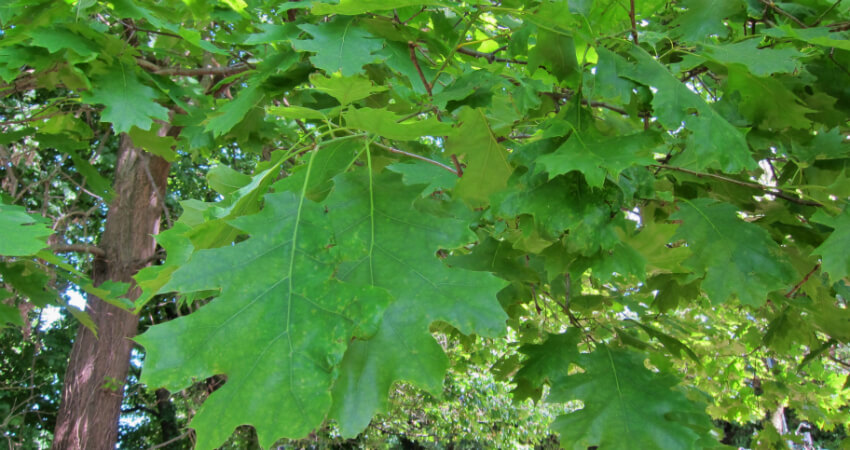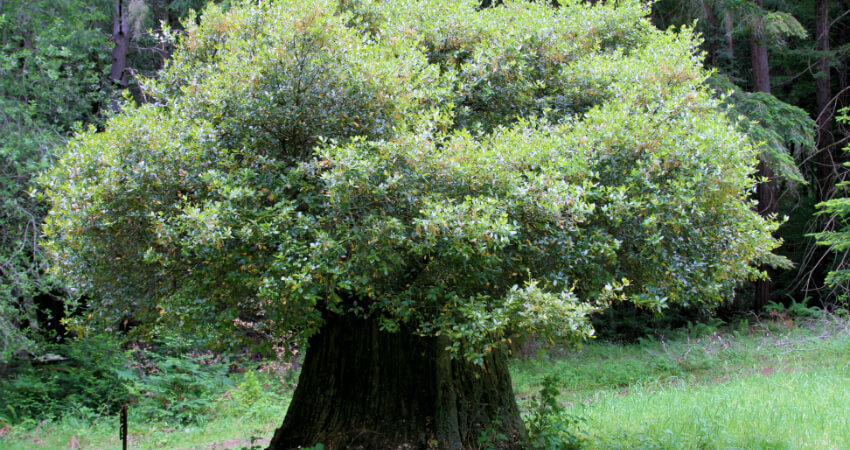Oak trees are built strong, allowing them to live for hundreds of years. Tannic acids in the leaves and bark guard oaks from fungi and insects. Oak trunks, the trees’ thick main stems, store water for use during dry periods. Oaks send up new sprouts from their roots if they are burned down or eaten by animals. Many oaks have thick bark that protects them from fire. For these reasons, oaks are among the most important species in many forests, woodlands, and other ecosystems.
Oaks have a reputation for being hard to transplant successfully. This can be true if you’re seeking instant gratification and attempt to plant an oak that is too big, or a potted oak that is too old. Oaks develop massive root systems which they grow quickly when young—it’s one of the reasons oaks are so good at protecting our watersheds and topsoil. To transplant an oak that’s already several feet tall you have to root prune it nearly to death. If it survives the transplant, it will grow very little for years afterwards as it tries to develop new roots. It is hard to believe but oaks planted as acorns or young saplings catch up and pass 15-foot transplants in just a few years. Finally, large transplanted oaks are expensive, often thousands of dollars for a tree with a 50 percent chance of dying in the first year.
Potted oaks have similar problems. Oak roots grow so fast that a potted oak can become root-bound in a single season. A potted oak that is 5 feet tall may be root-bound, with a high probability of choking itself to death once in the ground. Trees that have been root pruned when successively moved to larger containers have a good chance of survival, but will not be as vigorous as a tree planted directly from an acorn.
Choose the location wisely. Although some species remain small even when mature (e.g. dwarf chestnut oak), most oaks will become large trees much faster than you think, so picture the area a mature oak (and its root system) will occupy in 20 years.


![]()